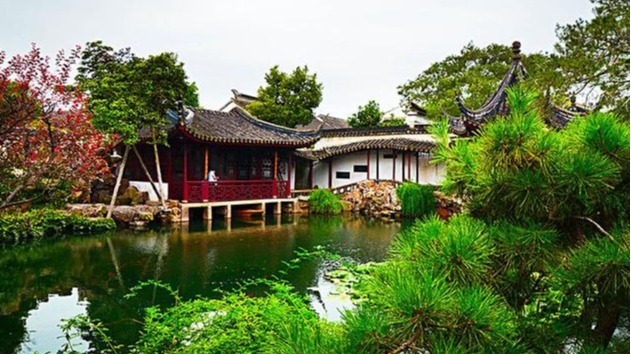Garden culture refers to the natural environment and play and rest area of beauty created in a certain area by using engineering technology and artistic means, by transforming the terrain, planting trees and plants, creating buildings and arranging paths. Gardens include courtyards, house gardens, small playgrounds, flower gardens, parks, botanical gardens, zoos, etc. With the development of the discipline of gardening, it also includes forest parks, scenic spots, nature reserves or national parks as well as rest and recuperation resorts.
Chinese garden culture has stretched over thousands of years, inheriting a poetic wisdom of construction, shaping a living environment model of "harmony between man and nature", and forming a national aesthetic that deeply integrates the natural mood and humanistic spirit.
Among the more than 1,000 current world heritage sites, gardens can be the cultural heritage itself or the carrier of the cultural heritage. Among more than 5,000 national key cultural relics protection units that have been announced, many of them are directly or indirectly related to gardens, and they exist in the form of royal gardens, private gardens and public scenic areas in the long history. In the author's opinion, the outstanding value of Chinese gardens is reflected in four aspects, namely, the harmony between man and nature, the method of construction, the beauty of art and the proof of time and space.
The "Way of Heaven and Man" is a condensed expression of the traditional view of nature, which is based on "the law of nature and the harmony of man and nature". Chinese gardens have gone through a developmental process from imitating landscapes to expressing emotions to landscapes, and from reproducing nature to conveying mood, showing a simple view of nature and the philosophical wisdom of "the harmony of heaven and man".
The "rules of construction" of Chinese gardens are characterized by the integration of spatial structure and construction techniques. With the continuous evolution and development of living patterns, this integration of "rules" and "techniques" has shaped the natural elegance and simplicity of Jiangnan gardens as a representative of the house and garden space, where every step in the garden has a new view.
The "beauty of art" of Chinese gardens, including architecture, painting and calligraphy, poetry, music, etc., is a collection of natural beauty, artificial beauty, and the beauty of the mood, and the aesthetics of gardens is based on space and modeling art, which reveals the unique cultural consciousness and aesthetic ideals.
Suzhou's garden architects use a unique creative approach, through the overlap of rockery, water management, planting flowers and trees, configuration of garden buildings, and a large number of plaques, couplets, paintings and calligraphy, carvings, monuments and stones, furnishings and various ornaments and so on in a limited space to reflect the ancient philosophical concepts, cultural awareness and aesthetic sensibilities, so as to form a poetic and picturesque landscape garden of the literati, so that the people "do not need to go out of the city and get the enjoyment of landscape, living in a downtown area and get the interest of forest and spring," and to achieve the "although made by the people, as if heavenly" of the state of the art.
"Proof of time and space" means that the garden carries major historical events and social behaviors in a specific time and space, and has precious historical witness value. For example, the Summer Residence in Chengde in the Qing Dynasty showed a picture of history, such as the return of the Turks to the east.
Chinese gardens have consolidated the faith and pursuit of nature and life, aesthetic ideals and emotional support of the Chinese nation, and recorded a glorious chapter of civilization in the long history of the world. Discovering the cultural spirit and connotation of Chinese gardens, preserving traditional gardening techniques and arts, and passing on the concepts and wisdom of building living environments are the inevitable requirements for continuing the cultural flame. How to answer the question of revitalization, utilization and sustainable development of the garden heritage deserves our attention and expectation.
